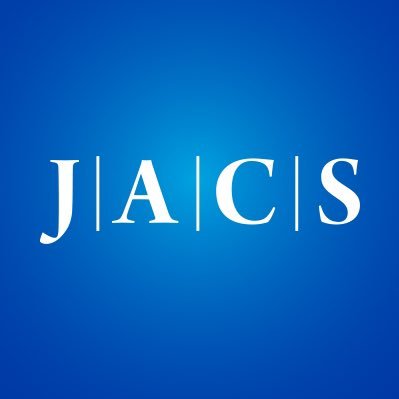
Gevorgyan Lab
@GevorgyanLab
Followers
2K
Following
653
Media
20
Statuses
218
catalytic methodologies | managed by @gsachin187 | web: https://t.co/0JeUkAsVOO…
Joined March 2022
General Light-Induced Pd-Catalyzed Allylic C–H Alkylation of Internal Alkenes: Direct Access to Tertiary and Quaternary Carbon Centers | Journal of the American Chemical Society @GevorgyanLab
@UT_Dallas
pubs.acs.org
Tertiary and quaternary carbon centers containing allylic systems are prevalent in natural products and drugs. Among existing approaches toward these valuable motifs, a direct allylic C–H alkylation...
0
2
9
Direct C–H alkylation could be a very useful strategy for rapidly building molecular diversity, including 3° & 4° carbon centers. Congrats Subham & Gaurav on developing Light-Induced Pd-Catalyzed Allylic C–H Alkylation of Internal Alkenes! out in @J_A_C_S
https://t.co/HnqDfzs7bk
7
22
139
Won 1st prize at the Welch poster awards held at The Post Oak Hotel in Uptown Houston on Oct 27–28, 2025. Great conference, excellent talks, outstanding clinical research and an awesome funding agency @WelchFoundation Thank you for the prize!
4
3
26
Transition-Metal-Free Site-Selective β- and γ-C–H Borylation of Aliphatic Amines | Journal of the American Chemical Society @GevorgyanLab @UT_Dallas
pubs.acs.org
A mild photoinduced transition metal-free method for β- and γ-C(sp3)–H borylation of amines has been developed. This protocol features a regioselective intramolecular hydrogen atom transfer (HAT)...
0
7
36
Transition-Metal-Free Site-Selective β- and γ-C–H Borylation of Aliphatic Amines (@J_A_C_S): https://t.co/IMEnQ4mp33 (@GevorgyanLab).
0
6
51
🚨 Two new C–H bonds borylated – no metals, no catalysts, just light! Excited to share our work, now out in @J_A_C_S: Site-selective β- & γ-C–H borylation of amines, featuring a new tether for elusive β-functionalization. Grateful to Nitish, Tong & Vlad! https://t.co/QoAsIaLJFe
pubs.acs.org
A mild photoinduced transition metal-free method for β- and γ-C(sp3)–H borylation of amines has been developed. This protocol features a regioselective intramolecular hydrogen atom transfer (HAT)...
Please join us in congratulating Sumon, Nitish, & Tong for achieving photoinduced, site-selective β- and γ-borylation of amines using a new, easily installable/ removable radical translocating group, enabling late-stage derivatization. Out now in @J_A_C_S
https://t.co/JVvLY2gF4m
9
8
97
Please join us in congratulating Sumon, Nitish, & Tong for achieving photoinduced, site-selective β- and γ-borylation of amines using a new, easily installable/ removable radical translocating group, enabling late-stage derivatization. Out now in @J_A_C_S
https://t.co/JVvLY2gF4m
5
22
153
Aryl radical-mediated dual HAT enables direct CDC of aldehydes & alkenes to form skipped enones with high chemoselectivity! Congrats, Sidhant & Pramod, for developing Ni-Catalyzed Cross-Dehydrogenative Coupling toward Skipped Enones, now out in @J_A_C_S
https://t.co/fWWMusfC2m
Nickel-Catalyzed Cross-Dehydrogenative Coupling of Aldehydes and Alkenes toward Skipped Enones | Journal of the American Chemical Society @GevorgyanLab
@UT_Dallas
3
14
129
@J_A_C_S Computational studies conducted by our awesome collaborators @pengliu_group support the DIXAT mechanism. Congrats to Sidhant, Kevin, and Turki, for putting it all together.
0
0
9
Our latest discovery on Ni-catalyzed directed halogen atom transfer(DIXAT) is out in @J_A_C_S! A directing group enables Ni to selectively generate Ar• from ArBr in presence of much weaker Ar–I bonds. A 1,n-HAT follows, enabling remote arylation of amines
pubs.acs.org
Halogen atom transfer (XAT) and single electron transfer (SET) have emerged as versatile tools for the generation of aryl radicals. The intrinsic reactivity of these methods is governed by bond...
6
14
124
General Modular and Convergent Approach to Diversely Functionalized Allylic Systems | Journal of the American Chemical Society @GevorgyanLab @UT_Dallas
pubs.acs.org
Synthesis of allylic functionalized motifs forging C–O, C–C, and C–S bonds has been achieved via visible-light-induced palladium catalysis. Simple alkenes, readily available 1,1-dielectrophiles, and...
0
4
42
A multicomponent approach to rapidly build molecular complexity is highly advantageous over other methods. Congrats, Sachin and Nikita, for the development of “General Modular and Convergent Approach to Diversely Functionalized Allylic Systems,” now out in @J_A_C_S @gsachin187
6
10
97
Our alumnus, Dr. Marvin Parasram, has received the prestigious Camille Dreyfus Teacher-Scholar Award! Congratulations, Marvin! @Mp_Chemist @dreyfusfndn Learn more about his work at
Congratulations to Dr. Marvin Parasram (@Mp_Chemist), @nyuniversity, for being named a 2025 Camille Dreyfus Teacher-Scholar! @ParasramLab @nyuchemistry #DreyfusAwards
6
0
65
Thank you Richmond @SarpongGroup for visiting @UTDallasChemBio. Enlightening lecture on some amazing science! Till the next time...
0
2
86
Check out 'Illuminating Palladium Catalysis'–our recent Account published in Accounts of Chemical Research, presenting our discovery and development of visible-light-induced palladium catalysis since 2016. This account was also selected for the Journal cover! Congrats, Kelvin!
4
14
135
The minireview "Recent Advances in Visible Light Induced Palladium Catalysis" written by our alumni @Sumonsarkar23 and @KelvinPSCheung is recognized as a top-viewed @angew_chem article in 2023. Congratulations, Sumon and Kelvin! 👏 Link: https://t.co/IY2CfvtiHZ
0
4
59
Excited to share our work published in @J_A_C_S Nickel-Catalyzed Branched Hydroalkylation of Alkenes with Diazo Compounds | Journal of the American Chemical Society
pubs.acs.org
A nickel-catalyzed, branched-selective hydroalkylation of alkenes using diazo compounds has been developed. This protocol enables the functionalization of both activated and unactivated alkenes, in...
0
4
34
Powerful reaction and a very interesting mechanistic proposal involving a nickel carbene - thanks for inviting me to be a part of this beautiful work. The first paper from my group! https://t.co/b2haeKfSqI
#compchem
pubs.acs.org
A nickel-catalyzed, branched-selective hydroalkylation of alkenes using diazo compounds has been developed. This protocol enables the functionalization of both activated and unactivated alkenes, in...
Join us in congratulating Nikita and Valeriia for discovering a new reactivity of diazo compounds, undergoing branch-selective hydroalkylation with alkenes. Initial findings suggest a carbene-type mechanism which is unusual for nickel catalysis. Published today in @J_A_C_S
2
4
70














